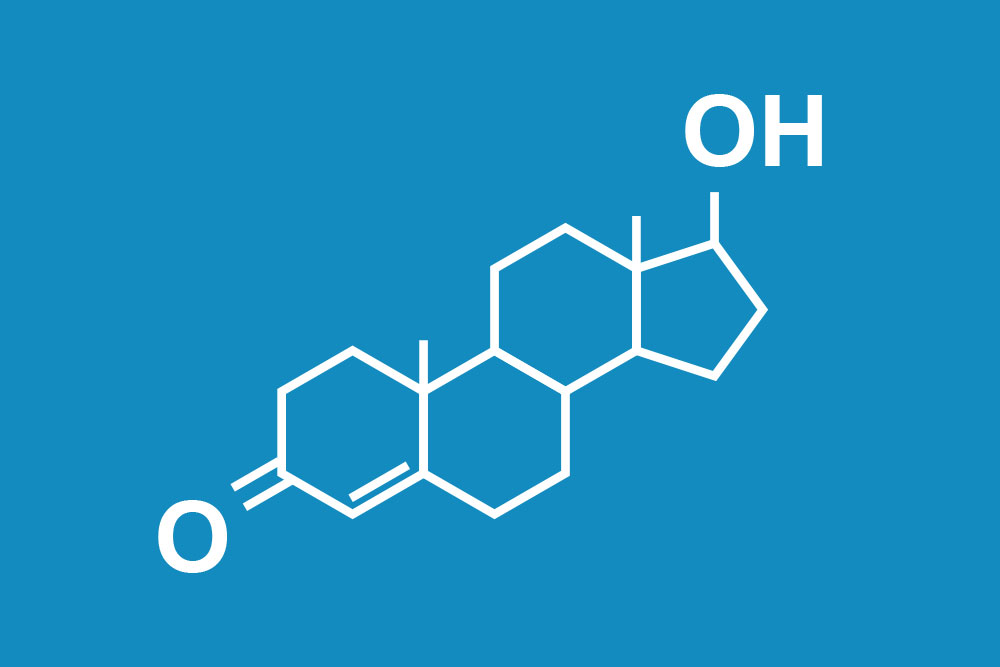Testosterone Replacement Therapy
Low testosterone is more common than people think. In fact, Western Michigan Urology Associates found that at least 1 out of every 4 men over 30 have low levels. Our telehealth program is simple, easy to follow, and allows you to begin your hormone replacement journey from the comfort of your own home.
Free vs. Total Testosterone Levels
Free testosterone levels are the amount of testosterone that are not bound to proteins, such as sex hormone binding globulin (SHBG), and available to interact with cells in the body. Total testosterone is the measurement of all testosterone in the body, which includes bound and unbound forms.
Free testosterone generally makes up 1-2% of total testosterone levels. While total testosterone is a useful measure in assessing overall hormone health, free testosterone levels can offer more accurate information about active testosterone levels in the body.


What Is Low Testosterone?
Low testosterone (low-T) is a condition in which a man’s body does not produce enough of the hormone testosterone. Testosterone is a critical hormone involved in a range of processes, including muscle and bone mass, sex drive, sperm production, and facial and body hair. Low testosterone is typically diagnosed if levels fall under 300-300 ng per deciliter (commercially available tests usually measure total testosterone). Lower than normal levels may cause a decreased sex drive, reduced muscle and bone mass, as well as an increased risk of other health conditions.

Free vs. Total Testosterone Levels
Free testosterone levels are the amount of testosterone that are not bound to proteins, such as sex hormone binding globulin (SHBG), and available to interact with cells in the body. Total testosterone is the measurement of all testosterone in the body, which includes bound and unbound forms.
Free testosterone generally makes up 1-2% of total testosterone levels. While total testosterone is a useful measure in assessing overall hormone health, free testosterone levels can offer more accurate information about active testosterone levels in the body.

What Is Low Testosterone?
Low testosterone (low-T) is a condition in which a man’s body does not produce enough of the hormone testosterone. Testosterone is a critical hormone involved in a range of processes, including muscle and bone mass, sex drive, sperm production, and facial and body hair. Low testosterone is typically diagnosed if levels fall under 300-300 ng per deciliter (commercially available tests usually measure total testosterone). Lower than normal levels may cause a decreased sex drive, reduced muscle and bone mass, as well as an increased risk of other health conditions.
What Is Low Free Testosterone?
Low Free Testosterone is a condition in which the body does not produce unhealthy amounts of free (unbound) testosterone. It typically only affects males and may be caused by a variety of factors such as aging, obesity, hormonal disorders, genetics, and/or diseases such as pituitary or liver issues.


What Is Low Free Testosterone?
Low Free Testosterone is a condition in which the body does not produce unhealthy amounts of free (unbound) testosterone. It typically only affects males and may be caused by a variety of factors such as aging, obesity, hormonal disorders, genetics, and/or diseases such as pituitary or liver issues.
Symptoms Of Low Free Testosterone
These include decreased strength and stamina, erectile dysfunction, reduced sex drive, trouble focusing, and depression. Low free testosterone can be diagnosed with a blood test and treated with medications or hormone therapy.
Decreased Strength & Stamina
Depression
Reduced Sex Drive & ED
Trouble Focusing
How Do We Diagnose Low Testosterone?
The most accurate way to diagnose low testosterone is through a blood test. The doctor will measure the level of hormones and other key metabolites in the patient’s blood to determine if their testosterone levels are indeed low. Hormone levels should be measured at least twice during the same time period, typically early morning immediately after waking. Other potential diagnostic methods include urine tests, physical exams, and photoscan imaging.
Low Free Testosterone can cause symptoms even if you have normal total testosterone levels. Some people can experience symptoms of low free testosterone even when their total testosterone levels are within the normal range. These symptoms can include depression, difficulty sleeping, increased fatigue, decreased libido, and weight gain. Other potential symptoms, like reduced mental sharpness, can mimic other aspects of aging and may be attributed to normal aging instead of low free testosterone levels.
Can You Have Low Free Testosterone & Normal Total Testosterone Levels?
Yes, it is possible to have low free testosterone levels and normal total testosterone levels. Low free testosterone occurs when the amount of testosterone that is available for the body to use is lower than normal levels. This happens when there is a decrease in hormones that help transport testosterone through the body, such as albumin or sex hormone binding globulin.
High levels of these hormones can lead to high total testosterone levels, but still leave very little free testosterone available for the body to use. In this case, it is possible for someone to have normal total testosterone levels but still have low free testosterone levels.

Can You Have Low Free Testosterone & Normal Total Testosterone Levels?
Yes, it is possible to have low free testosterone levels and normal total testosterone levels. Low free testosterone occurs when the amount of testosterone that is available for the body to use is lower than normal levels. This happens when there is a decrease in hormones that help transport testosterone through the body, such as albumin or sex hormone binding globulin.
High levels of these hormones can lead to high total testosterone levels, but still leave very little free testosterone available for the body to use. In this case, it is possible for someone to have normal total testosterone levels but still have low free testosterone levels.
Our Telemedicine Process

Step 1
Complete Our Online Questionnaire
Step 2
Schedule Your Free Consultation
After completing our questionnaire, you’ll receive a text message with instructions to download our telemedicine app and schedule your free consultation with one of our physicians.


Step 3
Review Your Options
During your free consultation, the physician will review your questionnaire with you. Together, you’ll discuss customized care options for your treatment.
Step 4
Enroll In The Program
Once you’ve reviewed your options with one of our physicians, you’ll be enrolled in the program. You’ll receive a lab order for a blood test to be completed at the lab of your choice.


Step 5
Establish A Treatment Plan
Schedule a time with your Bodyshop Wellness physician to review your lab results. They’ll determine a treatment plan and what prescriptions you need.
Step 6
Receive Your Medication
Prescriptions are delivered right to your door. If you need any training with injections, we’re here to help with that, too! Repeat steps 4-6 every 90 days.


Step 1
Complete Our Online Questionnaire

Step 2
Schedule Your Free Consultation
After completing our questionnaire, you’ll receive a text message with instructions to download our telemedicine app and schedule your free consultation with one of our physicians.

Step 3
Review Your Options
During your free consultation, the physician will review your questionnaire with you. Together, you’ll discuss customized care options for your treatment.

Step 4
Enroll In The Program
Once you’ve reviewed your options with one of our physicians, you’ll be enrolled in the program. You’ll receive a lab order for a blood test to be completed at the lab of your choice.

Step 5
Establish A Treatment Plan
Schedule a time with your Bodyshop Wellness physician to review your lab results. They’ll determine a treatment plan and what prescriptions you need.

Step 6
Receive Your Medication
Prescriptions are delivered right to your door. If you need any training with injections, we’re here to help with that, too! Repeat steps 4-6 every 90 days.
